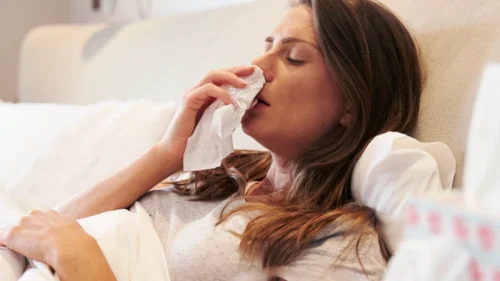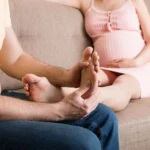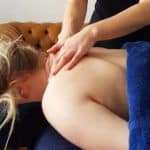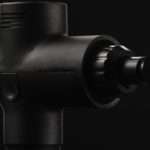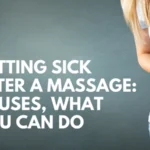When you’re feeling under the weather, a massage might seem like a great way to relax and ease discomfort. But is it actually beneficial—or could it make you feel worse? Massage therapy has well-known advantages, from stress relief to improved circulation, but when illness strikes, the effects can vary. Understanding the benefits, risks, and best practices of massage when sick can help you make the right decision for your health.
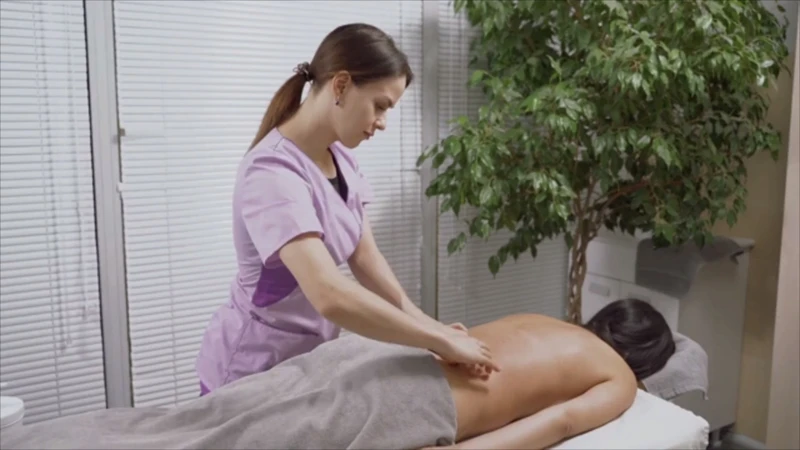
Table of Contents
The Benefits of Massage When Sick
Massage therapy isn’t just about relaxation—it offers a variety of physiological benefits that may support recovery when you’re feeling unwell. Here are some key advantages:
1. Boosts Circulation
Massage promotes better blood flow, which enhances oxygen and nutrient delivery to tissues. This can help the body’s immune system function more effectively and speed up the recovery process.
2. Supports Lymphatic Drainage
A gentle massage can stimulate the lymphatic system, helping the body eliminate toxins, reduce congestion, and enhance immune function. Lymphatic drainage massage, in particular, is known to assist in reducing swelling and fluid buildup.
3. Eases Muscle Tension & Body Aches
If you’re dealing with body aches from a cold or the flu, a massage can help relax tight muscles and alleviate discomfort. Techniques such as Swedish massage can soothe soreness and promote relaxation.
4. Reduces Stress and Anxiety
Massage lowers levels of cortisol, the stress hormone, while increasing the production of serotonin and dopamine—neurotransmitters associated with mood regulation. Less stress can mean a better immune response and faster recovery.
5. Promotes Better Sleep
Many people struggle with sleep when they’re sick due to congestion, coughing, or general discomfort. Massage can promote relaxation and improve sleep quality, helping the body heal more efficiently.
The Risks of Getting a Massage When Sick
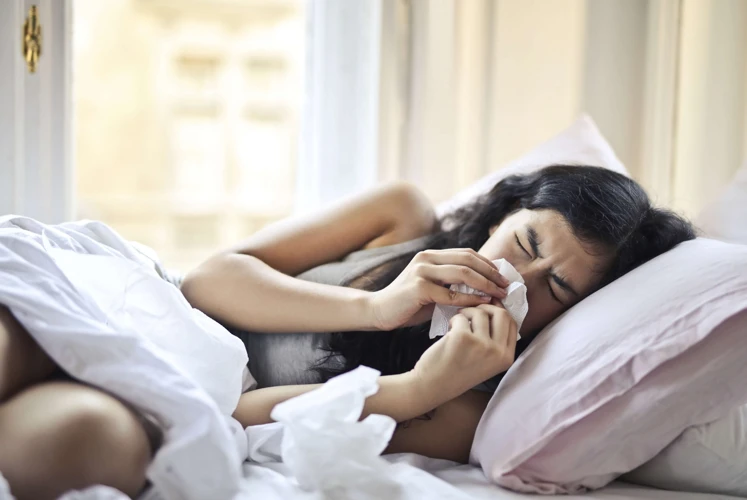
While massage has many benefits, there are times when it’s best to skip a session and allow your body to recover naturally. Here are a few risks to consider:
1. Overstimulation of the Immune System
Massage increases circulation and stimulates the immune system, which can sometimes overload your body when it’s already fighting off an illness. This could make symptoms feel more intense in the short term.
2. Increased Risk of Spreading Illness
If you have a contagious illness like the flu, common cold, or any viral infection, getting a massage may put your therapist and others at risk. Most professional massage therapists will ask clients to reschedule if they have symptoms of illness.
3. Worsening of Symptoms
Massage can sometimes exacerbate symptoms such as congestion, dizziness, or fatigue, making you feel worse instead of better. Increased circulation might also temporarily intensify headaches or sinus pressure.
4. Dehydration and Fatigue
A massage can be physically draining, and if you’re already fatigued from being sick, it might leave you feeling even more exhausted. Staying hydrated and resting afterward is crucial.
When Should You Avoid a Massage when sick?
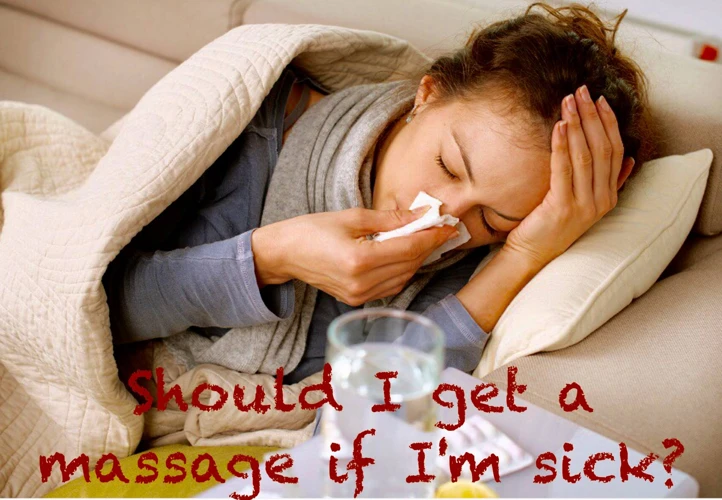
If you’re experiencing any of the following symptoms, it’s best to avoid massage until you’re feeling better:
- Fever: A massage can raise body temperature further, worsening discomfort.
- Severe congestion: Lying face down can make it harder to breathe if you have a stuffy nose or sinus pressure.
- Nausea or vomiting: Massage can increase circulation and potentially make nausea worse.
- Flu-like symptoms: If you have chills, aches, or extreme fatigue, your body needs rest, not additional stimulation.
- Contagious illness: If you’re contagious, it’s best to wait until you’re fully recovered to avoid spreading the illness.
The Best Time to Get a Massage After Being Sick
If you want to reap the benefits of massage without the risks, it’s best to wait until:
- Your fever has been gone for at least 24-48 hours.
- Your energy levels have returned to normal.
- You’re no longer experiencing severe congestion, nausea, or flu-like symptoms.
- You are no longer contagious.
At this stage, a massage can help detoxify the body, relieve tension, and restore balance after illness.
Gentle Massage Techniques to Try After Recovery
Once you’re feeling better, opting for gentle massage techniques can help restore energy and alleviate lingering muscle tension. Here are some beneficial options:
✅ Swedish Massage:
- Gentle, soothing strokes that help reduce stress, improve circulation, and enhance relaxation. Ideal for when your body feels fatigued and achy.
✅ Lymphatic Drainage Massage:
- Soft, rhythmic movements designed to stimulate the immune system and help the body naturally remove toxins. Especially beneficial if you’re experiencing swelling or congestion.
✅ Reflexology (Foot Massage):
- Targets pressure points on your feet associated with different parts of your body, supporting overall wellness, easing tension, and providing relief from minor aches.
✅ Aromatherapy Massage:
- Combines gentle massage with essential oils like eucalyptus or peppermint to aid breathing and relaxation.
- Enhances mental clarity and reduces stress post-illness.
🚫 Avoid:
- Deep tissue or aggressive massages, as these can make your body more sore or increase discomfort when you’re already not feeling well.
With the right approach, massage can gently support your body’s recovery process, leaving you feeling calmer and stronger as you heal.
FAQ: Common Questions About Massage When Sick
1. Can ice massage help when sick?
Yes, ice massage can be a useful home remedy while sick. Applying ice to areas of inflammation, such as the forehead for headaches or swollen sinuses, can help reduce discomfort and congestion. It may also relieve muscle aches and soreness associated with fever or general malaise. However, ice massage should be done carefully, using a cloth barrier to avoid direct skin contact, and for short durations to prevent overcooling the body.
2. Is it bad to get a massage when you have a cold?
Yes, it is generally not recommended to get a massage when you have a cold. Your body needs rest, and massage can sometimes worsen symptoms or spread the illness.
3. Can massage help with sinus congestion?
While some techniques, such as lymphatic drainage, can aid in clearing congestion, it’s better to wait until you’re feeling better before trying them.
4. What are the best essential oils for a massage after being sick?
Some essential oils known for their immune-boosting and respiratory benefits include:
- Eucalyptus (helps with congestion)
- Peppermint (soothes headaches and improves breathing)
- Lavender (promotes relaxation and better sleep)
- Tea Tree Oil (has antibacterial and antiviral properties)
5. Can massage shorten the duration of an illness?
There is no solid evidence that massage can directly shorten the length of an illness. However, once you have recovered, it can help your body regain balance and reduce post-illness fatigue.
6. How soon after being sick can I get a massage?
It’s best to wait at least 24-48 hours after your fever has broken and symptoms have significantly improved. If you had a contagious illness, ensure you are no longer at risk of spreading germs before booking a session.

Conclusion
Massage therapy is not recommended when you’re actively sick, as it can worsen symptoms and put others at risk. Instead, allow your body time to heal through rest, hydration, and proper care. Once you’re fully recovered, a post-illness massage can help restore energy, relieve muscle tension, and support overall well-being.
When in doubt, always consult with a healthcare professional or your massage therapist before getting a massage after an illness.
📚 References
- Shvartz, E., & Shashar, D. (2011). The Effect of Massage Therapy for Pain Relief.
- Centers for Disease Control and Prevention. (2018). Treatment: Antiviral Drugs.
⚠️ Disclaimer:
This article is for informational purposes only and does not constitute medical advice. Always consult with a licensed healthcare provider or certified massage therapist before beginning any new treatment, especially if you have pre-existing health conditions or concerns.

